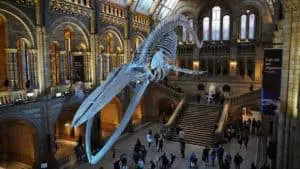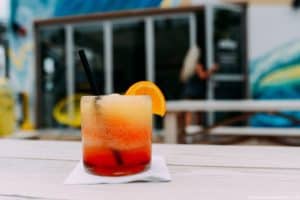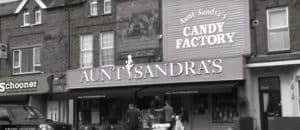In Ernest Hemingway’s Footsteps: Tracing Literary Landmarks from Paris to Havana
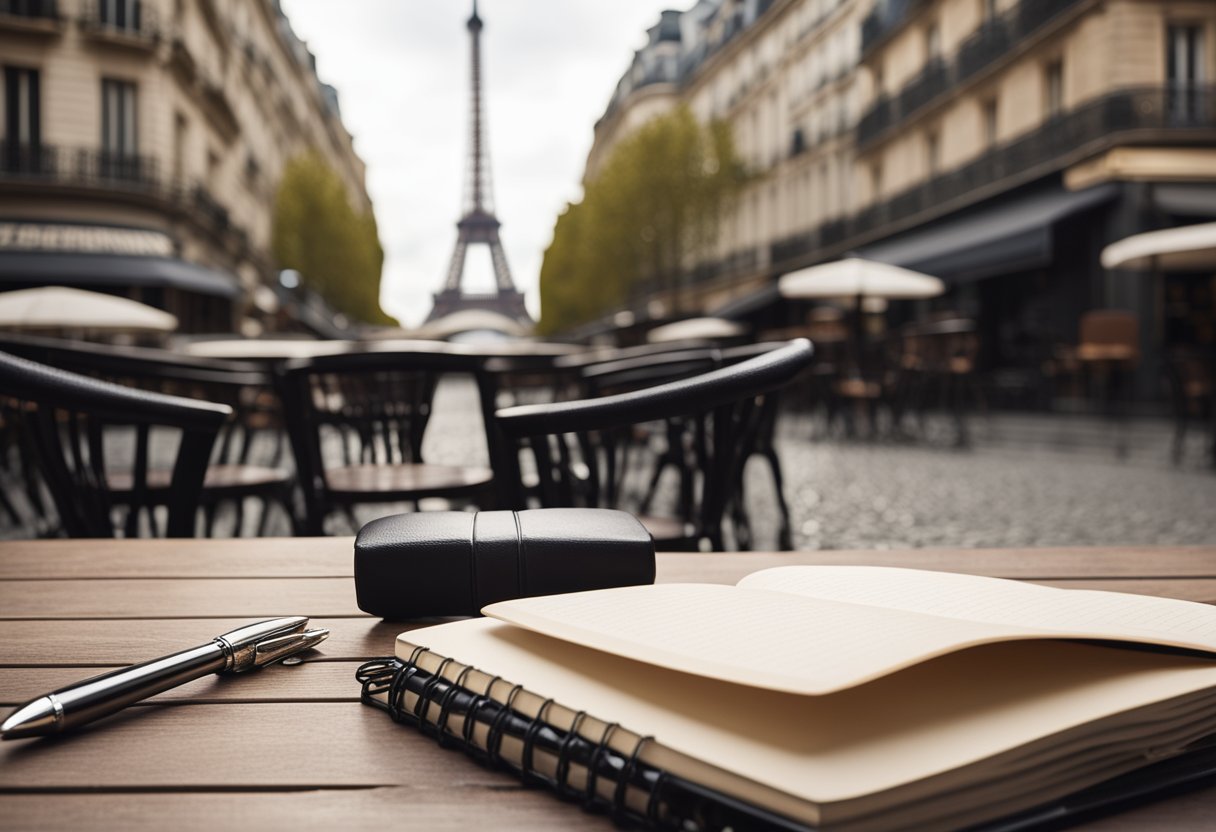
Updated On: April 17, 2024 by Raghda Elsabbagh
Exploring the haunts and homes of Ernest Hemingway captures the essence of a literary journey that extends beyond mere tourism. As we trace the sidewalks of Paris to the seductive allure of Havana, the enduring presence of Hemingway is felt as though the clacking of his typewriter keys was still reverberating through time. This pilgrimage is a homage to the life and creativity of a man whose works remain immortalised, each destination a chapter from his vibrant narrative.

In the cafés of the Left Bank or amidst the azure waters of Key West, the spirit of Hemingway’s adventurous existence encourages an intimate encounter with the settings of his storied life. We immerse ourselves in cultures and experiences that shaped Hemingway’s world, understanding the profound impact of his surroundings on his literary themes and styles. Through the lens of his rich, tumultuous life, we walk through cities and seascapes that inspired novels and discover the real-life counterparts of his fictionalised locales.
Table of Contents
Early Life of Ernest Hemingway and Inspiration

Ernest Hemingway’s formative years in Oak Park, a suburb of Chicago, laid the groundwork for his future as a towering figure in American literature. In these early stages, his environment and experiences cultivated the unique style and themes that would characterise his works.
Oak Park Beginnings
Born on 21 July 1899, Hemingway was raised in Oak Park, Illinois, a conservative suburb of Chicago. The strictures and values of this community contrasted sharply with the adventurous and often nonconformist life Hemingway would later lead. His upbringing in Oak Park, with its emphasis on austerity and practicality, did not stifle his burgeoning creativity but instead provided a backdrop against which he could develop his renowned narrative technique and sparse prose style.
During his early years, Hemingway found solace and inspiration in the natural world around him. He often accompanied his physician father on trips to the countryside, which stoked his lifelong passion for outdoor pursuits such as hunting and fishing. These experiences were instrumental in shaping his descriptive prowess and his propensity for succinct, evocative language that would later be evident in his literary works.
From a young age, Hemingway was also exposed to the arts by his mother, who was an avid musician and painter. Although he would later rebel against the strict cultural milieu of Oak Park, these initial encounters with artistic expression contributed to his nuanced understanding of human experiences and emotions, which would permeate his writing.
Hemingway’s time in Oak Park may not have been lengthy, but its impact on his worldview and his literary genius is unquestionable – setting the stage for one of America’s greatest literary voices to emerge.
Paris: A Literary Melting Pot
In Paris, the 1920s roar again through the Latin Quarter‘s cobbled streets, where the Lost Generation found its voice and literary titans like Hemingway and Stein redefined art. Here, we discover the very haunts that nurtured some of the greatest works in literary history.
Latin Quarter Explorations
The Latin Quarter has long been the heart of Parisian intellectual life. We stroll along Rue Mouffetard and Rue Cardinale Lemoine, where cafés and bookshops whisper tales of once-regular patrons like Hemingway and Fitzgerald. Here, the spirit of the Lost Generation still lingers in the air, inviting us to pause and soak in the rich literary history embedded in the vibrant street life that surrounds us.
Literary Icons and the Lost Generation
Gertrude Stein’s salon on Rue de Fleurus became a cradle for avant-garde writers like Ezra Pound and F. Scott Fitzgerald. Together, they formed the core of the Lost Generation, and their conversations and collaborations at places like the Closerie des Lilas and Les Deux Magots became the stuff of legend. Today, we retrace their steps through the bustling Brasserie Lipp, where their legacy of bold literary experimentation still inspires.
Shakespeare & Company: A Hub for Creatives
Upon entering Shakespeare & Company, we’re immediately enveloped by the scent of old books and the echo of typewriter keys that once composed future classics. Sylvia Beach’s legendary bookshop was more than a store—it was a sanctuary for writers such as Hemingway. Today, it remains a vibrant creative nexus, a testament to Paris’s enduring role as a sanctuary for artists and thinkers from around the world.
Key West: An American Refuge
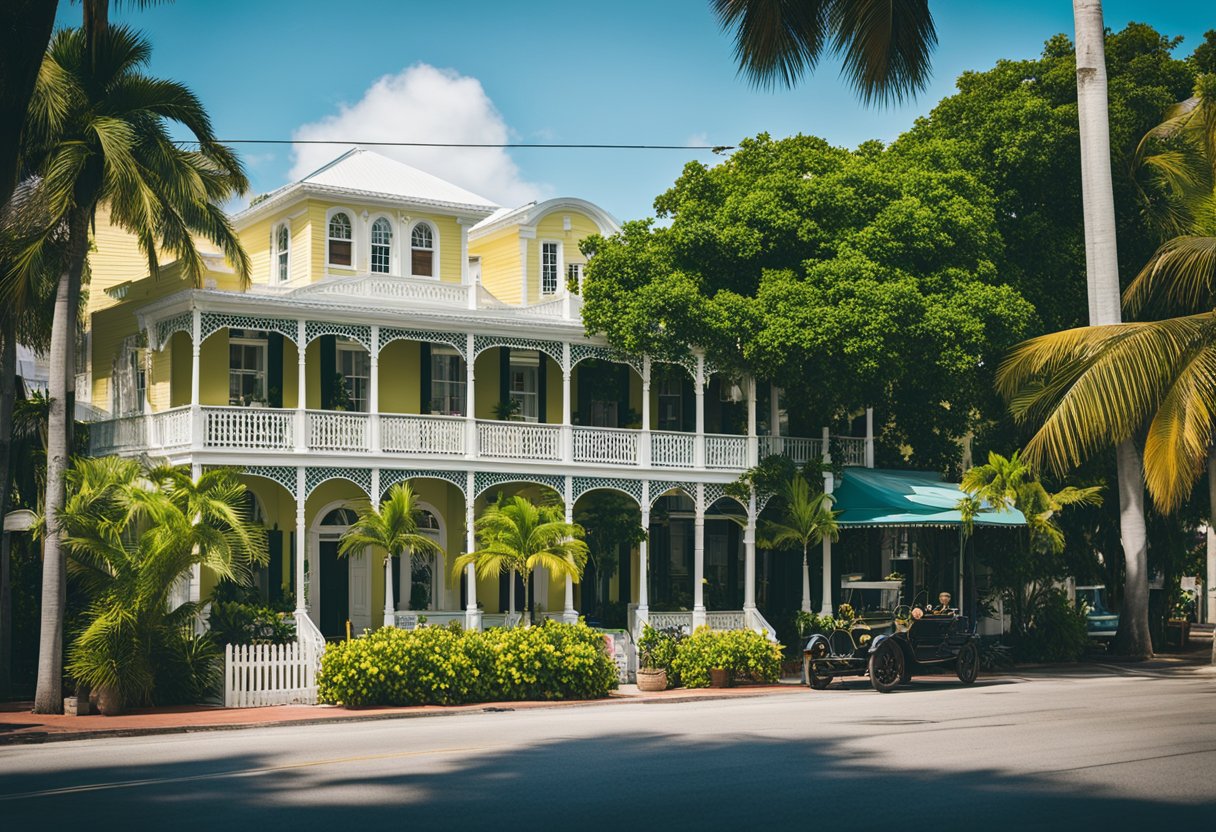
Key West has long served as a muse and refuge for literary figures, most notably Ernest Hemingway. This American island provided the perfect backdrop for both the work and leisure of this celebrated author.
Ernest Hemingway’s Home and Writing Sanctuary
Ernest Hemingway’s house in Key West stands as a testament to his prolific output and is a key attraction for literary aficionados. Situated at 907 Whitehead Street, the Hemingway Home is where he wrote approximately 70% of his works, as his second wife, Pauline Pfeiffer, contributed significantly to fostering an environment conducive to his writing. Hemingway’s home, complete with the writer’s studio, still houses his personal belongings and preserves the atmosphere of his days spent crafting enduring literature.
Visitors can meander through the rooms where Hemingway penned such works as “Death in the Afternoon” and “For Whom the Bell Tolls.” The garden and swimming pool area are evocative of Hemingway’s leisurely pursuits when he was not at his desk.
Favourite Local Haunts
Hemingway was known for his deep-sea fishing excursions, a passion that Key West aptly satisfied with its abundant marine life and favourable climate. When not fishing or writing, Hemingway was a fixture at local bars, where he drank and socialised with the residents and fellow writers.
Sloppy Joe’s bar, a favourite of Hemingway’s, played host to his daily routine and continues to be a place where one can sense his enduring presence. The atmosphere of Sloppy Joe’s undoubtedly influenced Hemingway’s work and life, encapsulating the laid-back yet vibrant spirit of Key West. It is a locale that reflects the island’s hospitality and charm, qualities that drew Hemingway and other creatives to its shores.
Cuban Escapes and Lasting Influence
Ernest Hemingway’s Cuban period was both a deeply personal sojourn and a formative chapter for literature, as his experiences on the island significantly influenced some of his most celebrated works. His residence and the spots he frequented have since become points of pilgrimage for literature lovers and travellers alike.
Life at Finca Vigía
Ernest Hemingway’s residence at Finca Vigía offered him a tranquil retreat where he could focus on his writing, away from the bustling energy of Havana. Our journey exploring Hemingway’s Cuban legacy often starts here, as it remained his home from 1939 until 1960. It was at this lookout farm where he penned parts of For Whom the Bell Tolls and The Old Man and the Sea, reflecting the profound impact of Cuba and its surroundings on his narrative craft.
Iconic Cuban Spots and the Daiquiri
The literary trail through Havana inevitably leads us to the Floridita Bar, a place where Hemingway’s legacy looms as large as the life-size bronze statue of him leaning on the bar. Famous for its Daiquiris — a cocktail of rum, citrus, and sugar — Floridita frequently hosted Hemingway, who contributed to the drink’s enduring fame in Cuba. A visit here allows us to stand literally in Hemingway’s footsteps and savour a tipple synonymous with his taste and the city’s vibrant travel culture.
European Adventures and War-Time Experiences
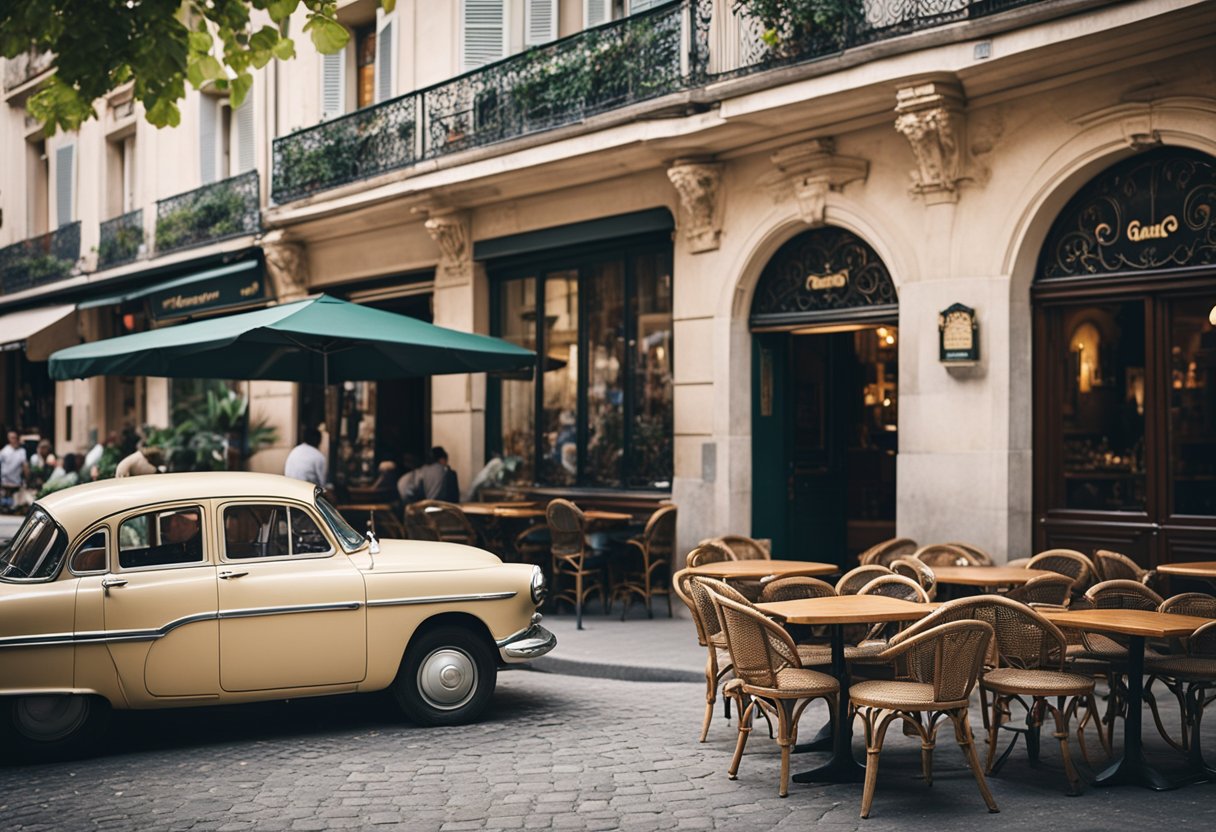
As we trace the life of Ernest Hemingway, we encounter a rich tapestry of European landscapes deeply intertwined with his literary production and personal experiences during the war.
Italian Front
In Italy, during the First World War, Hemingway served as an ambulance driver—a period of his life that inspired his novel A Farewell to Arms. This narrative was rooted in the volatile ambience of Europe at war, with Italy’s front lines playing a pivotal role in shaping his outlook. Hemingway’s experiences were steeped in the harsh realities of conflict, from the Italian countryside, brimming with the chaos of battle, to the close bonds formed amidst the carnage, all of which coloured the backdrop for his esteemed works.
During his time in Europe, Hemingway also settled in Paris with his first wife, Hadley. The city served not only as a home but as a vibrant literary hub. Their Parisian sojourn was marked by encounters with other expatriate writers and the weaving of his war-touched narratives into the broader tapestry of European avant-garde literature.
The Sun Also Rises: Depictions of Spain
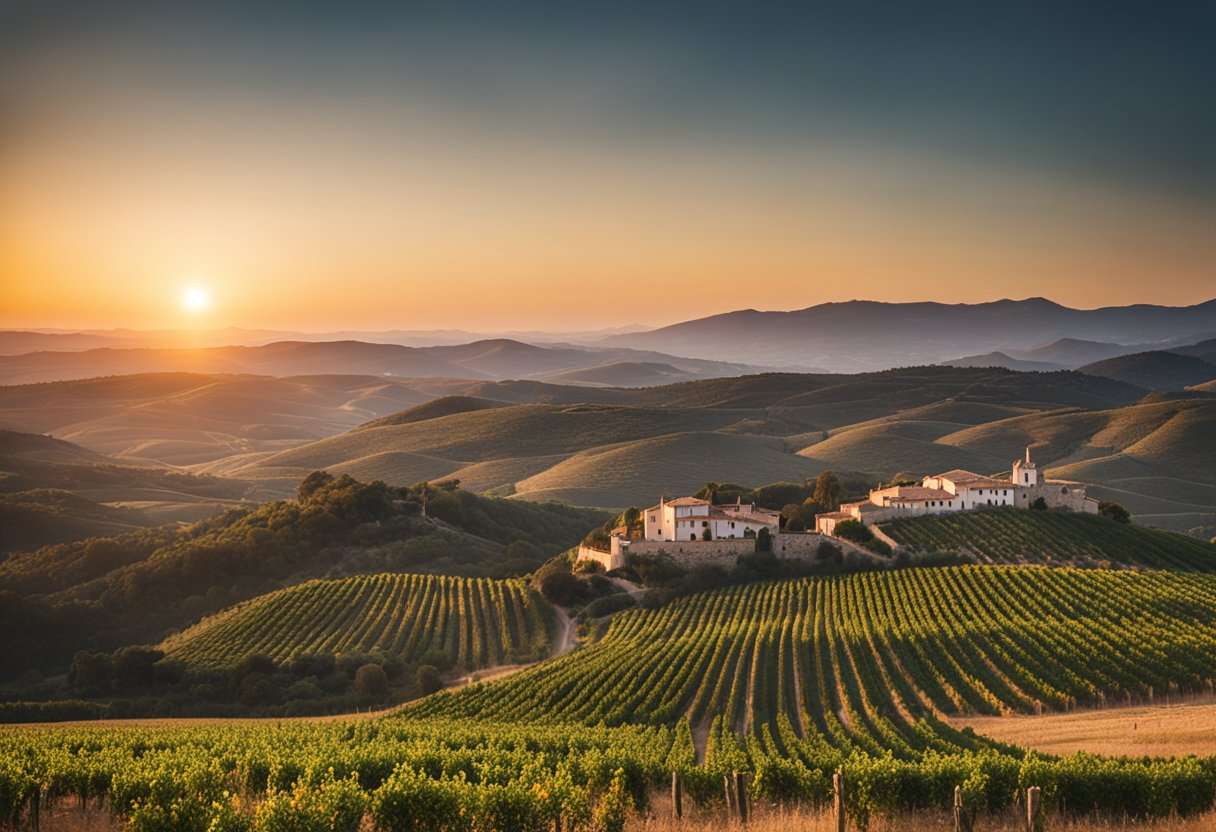
In The Sun Also Rises, Ernest Hemingway paints a vivid picture of Spain, immersing us in its cultural intricacies, from the bustling streets of Pamplona to the electrifying atmosphere of bullfighting arenas.
The Running of the Bulls
In his seminal work, Hemingway introduces readers to the thrilling Fiesta de San Fermín held in Pamplona, where the running of the bulls forms a central narrative thread. This event, steeped in tradition, is not just a mere backdrop but a dynamic character that shapes the story’s progression. The intricate relations between man and beast are laid bare, underscoring the bravery, chaos, and stark beauty synonymous with bullfighting. Hemingway’s account, precise and insightful, captures the heightened senses and raw energies of those who participate in both the run and the ensuing bullfights, serving as an experiential guide to one of Spain’s most intoxicating festivals.
Literary Themes and Styles

In our exploration of Ernest Hemingway’s work, we uncover a wealth of literary themes and distinctive styles that have cemented his reputation as one of the most influential writers of the 20th century.
Insights into Hemingway’s Writing
Ernest Hemingway’s writing is renowned for its succinct and forceful prose, often described as the ‘Iceberg Theory’ or ‘theory of omission’. This method suggests that the underlying themes of a story should not be explicitly stated but should be implicit, with enough context given so the reader can intuit the meaning. We see this in novels like The Old Man and The Sea, where the text focuses on the surface elements while the broader themes of pride, struggle, and the nature of heroism are inferred.
His narratives often portray elements of adventure, war, masculinity, and love, reflecting his own life experiences. This is particularly evident in A Moveable Feast, where his memoirs of Paris in the 1920s offer vivid vignettes of his encounters and the city’s influence on his craft. Moreover, Hemingway’s fiction frequently presents a stoic response to hardship, a key theme that abounds in works such as For Whom the Bell Tolls, where characters often face their tribulations with understated courage.
Hemingway’s style is also distinguished by its directness and clarity. He favoured short sentences and straightforward syntax, a stark contrast to the ornate language prevalent in much of the literature that preceded him. This clear, economical style lends his work a sense of immediacy and intimacy, drawing readers directly into the milieu of his characters. Hemingway’s dialogue, too, is noted for its authenticity—sparse and patterned closely after real speech, it adds to the realism of his narratives.
In Hemingway’s stories, nature is not only a backdrop but a central character. Descriptions of landscapes are more than mere settings; they reflect the emotions and journeys of his characters. This connection with the natural world is a consistent feature of his writing, and through it, Hemingway often delves into themes of life, death, and human endurance.
In delving into Hemingway’s work, we come to appreciate the profound impact of his literary contributions, which continue to resonate in the realm of modern literature. His influence extends far beyond his own writings, reaching into the broader sphere of literary style and shaping the voice of fiction for generations to follow. Through his succinct prose and understated themes, Hemingway invites us to seek out the deeper meanings that lie beneath the surface of the text, a challenge that rewards careful and thoughtful readers.
Relationships and Influences
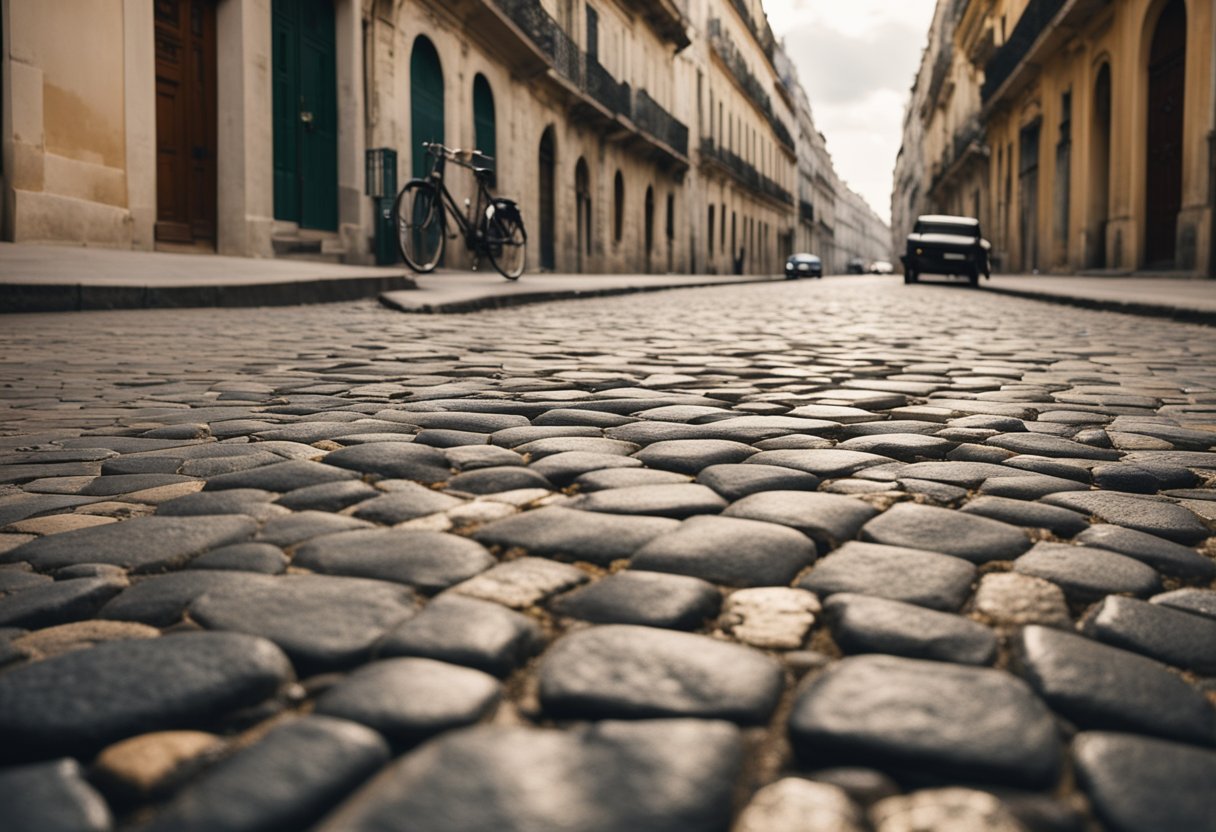
Before we delve into the friendships and rivalries that shaped Hemingway, it’s crucial to appreciate how his literary circle in Paris provided him with both stimulation and competition.
Friendships and Rivalries
Ernest Hemingway’s name often conjures images of a solitary figure braving the wilds or typing away in a sparse room, yet his life was rich with meaningful relationships that deeply influenced his work. Gertrude Stein is frequently mentioned as a mentor to Hemingway during his Paris years; she was part of a modernist movement and provided a guiding hand in Hemingway’s stylistic development. Their relationship eventually soured, and Hemingway described the split in his memoir, A Moveable Feast.
Ezra Pound, another towering figure of Modernist poetry, played a substantial role in Hemingway’s development as a writer. His fostering of Hemingway’s talent came with a degree of rivalry, but it was Pound’s generosity in critiquing Hemingway’s work that left a lasting impact.
The relationship with F. Scott Fitzgerald is particularly noteworthy. While both authors respected each other, the competitive nature of their friendship pushed Hemingway to fine-tune his craft. Fitzgerald’s first-hand account of the Jazz Age in The Great Gatsby influenced Hemingway’s sparse and direct narrative style.
James Joyce and Hemingway shared mutual respect and influence despite Joyce’s more complex narrative style being at odds with Hemingway’s lean prose. Their camaraderie in the cafes of Paris served as a melting pot for literary discussion and critique.
Hemingway’s bond with Sherwood Anderson was foundational, as Anderson’s work “Winesburg, Ohio” made a profound impression on Hemingway, leading him to embrace clear, concise storytelling as a powerful tool.
Lastly, the sometimes overlooked figure of Ford Madox Ford is important. As editor of the ‘transatlantic review’, Ford gave Hemingway a platform that helped launch his career in Europe.
Through these connections, our understanding of Hemingway’s work is greatly enriched. The support and rivalry from such figures underscore the pivotal role that relationships play in shaping an author’s work and legacy.
Memorable Places in Ernest Hemingway’s Life
Ernest Hemingway’s legacy is as much about his literary contributions as it is about the vivid locations that inspired him. Our journey takes us to the atmospheric streets and haunts that shaped his works and ethos.
Pilgrimage to Ernest Hemingway’s Haunts
Paris in the 1920s was a veritable melting pot of creativity, and Ernest Hemingway was at the heart of it on the Left Bank. Literary enthusiasts regularly make a pilgrimage to Café de Flore and Les Deux Magots, where Hemingway and other members of the “Lost Generation” would engage in passionate conversations over coffee. Not to be overlooked is the Hemingway Bar at The Ritz, a timeless establishment where Hemingway is said to have “liberated” the bar after the liberation of Paris.
- Café de Flore: Frequented spot by Hemingway and contemporaries.
- Les Deux Magots: Notable meeting place for intellectuals.
- Hemingway Bar at The Ritz: Hemingway’s favourite Parisian bar.
Within the heart of the city lies Jardin du Luxembourg, another landmark indelibly linked to Ernest Hemingway, providing a serene setting reflective of his contemplative moods.
Jardin du Luxembourg and Beyond
Considered one of Paris’s most treasured spots, the Jardin du Luxembourg was where Hemingway would gather inspiration and often come to rest. This luxurious garden with its regal ambience, provided a tranquil escape from the bustling city life.
- Jardin du Luxembourg: A source of solace and inspiration for Hemingway.
Under the shadows of Notre Dame, Hemingway would traverse the streets of the Latin Quarter, an area teeming with American expatriates seeking solace in shared experiences far from home. Montparnasse became their abode, where art and literature were not just pursuits but ways of life.
- Notre Dame and Latin Quarter: Centres of American expatriate and literary life.
- Montparnasse: The heart of artistic and literary activity in 1920s Paris.
In this section, we have wandered through the Parisian locales that formed the backdrop to Hemingway’s life, offering a compelling trace of his footsteps for literary aficionados to explore and experience.
End of an Era: Ernest Hemingway’s Final Years

Ernest Hemingway’s final years were marked by both personal retreat and public acclaim, culminating in a tragic culmination of a literary giant’s life.
Idaho Retreat and Nobel Recognition
Ernest Hemingway, in his later years, sought solace in the serene landscapes of Idaho. Our glimpse into Hemingway’s life reveals his retreat to Ketchum, where the tranquillity of the Big Wood River and the rugged grandeur of the Sawtooth Mountains offered him a haven. This period was not just one of seclusion but also of significant recognition, as Hemingway received the highest honour in literature. In 1954, he was awarded the Nobel Prize in Literature, an accolade that acknowledged his mastery of the art of narrative and the influence he had exerted on contemporary style.
Despite these professional accolades, the closure of Hemingway’s life was clouded by his personal battles. His struggle with mental health increasingly took a toll, setting a sombre tone for his final chapter. The confluence of his health issues and his sense of ending was sadly reflected in his ultimate act in July 1961, when Hemingway’s story reached its conclusion in Ketchum. It was an abrupt end to an era, the final page of a narrative as deep and complex as the characters he had so skillfully created. Hemingway’s end left a lasting impact on the literary world, his personal struggles interwoven with his professional legacy.
Legacy and the Ernest Hemingway Fan Experience

Ernest Hemingway’s enduring influence on literature is matched by the vivid experiences available to fans who wish to trace his life through the places he lived and wrote about. Our travels across historic settings make these connections tangible.
Walking in Hemingway’s Footsteps
We often find ourselves inspired to journey through the same streets and paths that Hemingway once did. In Paris, the cobbled lanes of the Latin Quarter still resonate with the echoes of the Lost Generation. It’s here you can meander through the gardens of Luxembourg or sit at a café terrace like Hemingway once did, reflecting on the pages of history.
Transitioning across the Atlantic, Havana offers a continuation of this pilgrimage. Hemingway aficionados revel in visiting sites like La Bodeguita del Medio, favoured by the author for its mojitos, or La Floridita, where his love for daiquiris is immortalised with a life-size statue. The coastal town of Cojimar, the setting for “The Old Man and the Sea,” feels like a passage directly into one of his narratives.
Travel encompasses more than just physical movement; it’s a literary journey too. By exploring Hemingway’s haunts, we not only honour his legacy but also deepen our understanding of his works. Witnessing the same landscapes that inspired classics like A Farewell to Arms and For Whom the Bell Tolls brings an additional dimension to our reading, enriching our connection to both the man and his craft. Through these sojourns, we grasp the profound impact Hemingway has left on both literature and the wanderlust he instils in his fans.
Each step we take following Hemingway’s trail enables us to craft our narrative, adding layers of personal experience to the storied locales tied to his legacy. As a guide, we bridge the gap between past and present, literary imagination and lived experience, encouraging Hemingway’s admirers to explore these timeless settings for themselves.
Frequently Asked Questions
In traversing the literary map along Hemingway’s historical journey, we uncover cafes, bars, landmarks, and museums steeped in the writer’s lore. From the tipple-fuelled tables of Parisian cafes to the sun-soaked streets of Havana, each location offers its own narrative in the Hemingway saga.
Which Parisian cafes and bars did Ernest Hemingway frequent?
Hemingway’s Parisian haunts were many, but the most famed ones included Les Deux Magots and Café de Flore, where he, alongside other notable literary figures, would share drinks and ideas. The brasserie La Closerie des Lilas also marked a regular spot for Hemingway to write and socialise.
What are some notable locations in Havana linked to Hemingway’s life?
In Havana, Hemingway’s presence is palpable at the Finca Vigía, his home, now a museum displaying his belongings. During his stays, he favoured room 511 at Hotel Ambos Mundos and frequented El Floridita bar, where his life-size bronze statue leans against the bar.
How did Hemingway’s time in Paris influence his writing?
The vibrant expatriate culture and literary scene of 1920s Paris provided Hemingway with the creative stimulation that deeply influenced his minimalist writing style, ultimately moulding works like The Sun Also Rises, which epitomises the ethos of the Lost Generation.
What are the key Hemingway landmarks to visit in Key West?
Key West preserves Hemingway’s legacy at the Ernest Hemingway Home, where he penned several of his works amidst the languid Floridian lifestyle, and at Sloppy Joe’s Bar, a favoured watering hole where his spirit seems to linger.
Which museums or sites in Paris hold Hemingway’s memorabilia?
Paris offers a trove of Hemingway memorabilia, notably at the Musée d’Orsay, where letters and personal effects can be found. The Shakespeare and Company bookstore is another site echoing Hemingway’s era, a meeting place for writers then and now.
Can you retrace Hemingway’s steps through Spain as portrayed in his works?
Yes, in Spain, one can walk in Hemingway’s footsteps, from the running of the bulls in Pamplona, immortalised in The Sun Also Rises, to his favoured Madrid haunts. Each locale offers a chapter of Hemingway’s storied escapades across Spain.


